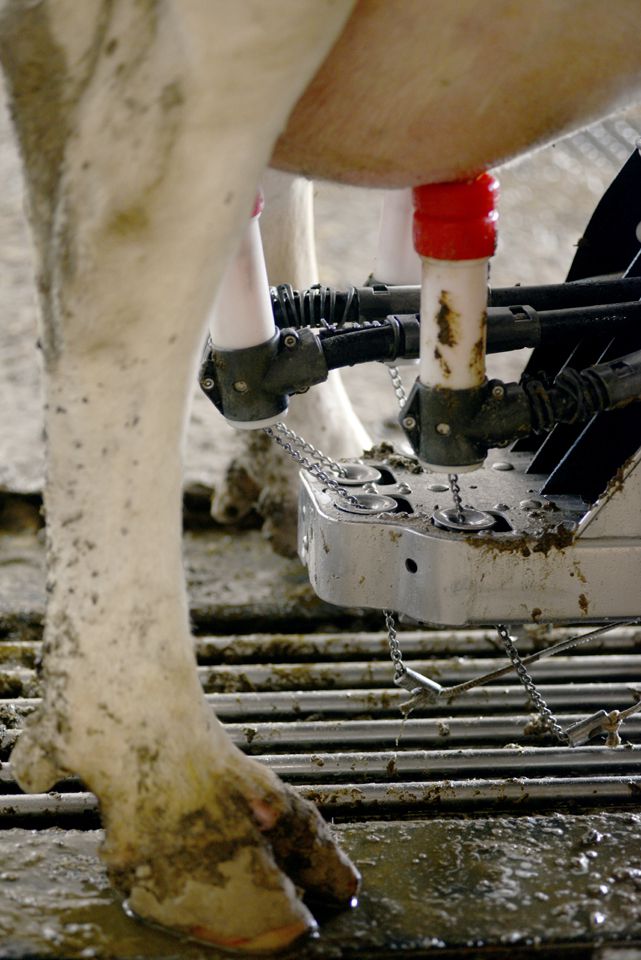
“It’s just a really big unknown for everybody and I think everyone’s doing their best to make sure that we continue to nourish Canadians and Ontario population with dairy products and keep stuff on the shelves,” says Christina Lewis, president of the Ontario Dairy Council.
“This issue that we’re having right now is so far beyond what anyone would have ever imagined,” she said.
Keeping store shelves stocked, Lewis said “is not a problem, but it’s sort of balancing the supply with demand and demand is a day-by-day thing,” Lewis said in an Ontario Farmer interview.
Lewis said some processors saw demand spike by as much as 40 per cent during the early days of social distancing.
Dairy Farmers of Ontario had issued one incentive day for producers to ramp up production mid-March, when milk began flying off the shelves as shoppers stocked up after the provincial order to self-isolate as part of the national effort to “flatten the curve,” in the battle against COVID-19.
Oversight and control of the fluid milk market (milk and cream consumers drink) has been a provincial jurisdiction since the beginning of supply management.
That was followed at the end of March with an email from chairman Murray Sherk advising that Ontario had reached peak capacity and farmers would be asked to take turns dumping milk. While they will be paid for the milk, farmers are reporting that as much as five million litres will be dumped weekly. In the first round it appears as many as 500 producers were being asked to dump.
All this is going on as consumers complain that grocery stores including Wal-Mart appear to be limiting milk purchases.
DFO had said the dumping would proceed in alignment with transportation of milk and it appears that DFO was beginning with milk being picked up by producers who are serviced by the Bluewater Milk Transportation Co-op.
Raw milk used to make fluid milk and cream is supplied on-demand to primary processors while processors of some industrial products are also supplied on demand, and processors of other industrial products require Plant Supply Quota (PSQ).
Lewis said processors are “having our own challenges on this side,” with employee apprehension and absenteeism and keeping up with sanitization.
“Our members are really running fast to keep up and try to do their part to deal with as much of the excess milk as they can,” she said.
Ontario Farmer had asked for clarification from DFO on details of the plan for dumping of milk. The general manager of the Ontario Milk Transport Association referred Ontario Farmer to DFO.
Lewis was also asked about milk consumption.
“Nobody has a real handle on that,” she said. “It’s something that’s changing day by day.”
Lewis said, “Certainly in the very beginning, a couple of weeks ago we saw consumers doing excess purchasing to make sure they had supplies for their homes and their families.”
By the end of March stores including Sobeys and Walmart were limiting consumers to two bags of milk per store visit.
“So many of them (processors) overnight were seeing increases up to 40%. So that’s significant,” Lewis said. The Ontario Dairy Council represents about 97 per cent of Ontario’s processing capacity, its website says.
Lewis said demand has “somewhat stabilized, but …even last week I heard that some of our just fluid processors; on Monday their orders were down 35% and on Tuesday, their orders were up 35%.”
Lewis said “it feels like demand is coming down overall on the fluid side and stabilizing to some degree.”
Lewis pointed out that market demand is very much dependent on the news cycle and “whatever measures government may take.” Lockdowns, she said, may drive people to “go into panic mode again. That’s really one of the big unknowns.”
Earlier, Dairy Farmers of Ontario had provided Ontario Farmer with this statement on its contingency plans during this unprecedented time.
“We are working diligently through the COVID-19 crisis to ensure the continuity of business operations and the uninterrupted supply of high-quality milk for Canadians. We take the health and well-being of our entire DFO team, and the producers we serve, very seriously and have communicated guidelines and protocols to mitigate the spread of the virus,” DFO said in the statement from CEO Cheryl Smith.
“We assembled a cross-functional task force early on to monitor evolving market requirements, identify critical issues that need to be addressed, and determine how best to communicate these messages to our producers and the public. The COVID-19 situation continues to develop rapidly. DFO has planned for multiple scenarios that would affect operations – including the shut-down of a processing plant – and these plans will be shared with producers, processors and government stakeholders if, and when, appropriate. That said, we want to assure producers and the public that we will be ready to respond as the situation dictates,” the statement said.
DFO added that it is “communicating with our producers directly on issues affecting them on-farm.”
Lewis said that members which serviced the restaurant sector lost half their business overnight and smaller artisan processors lost 75 per cent of theirs.
“On the flip side of the food service, companies that are doing delivery and takeout; certainly some of that restaurant business has sort of transferred over,” she said. While pizza sales are up, take-out or drive through services have increased a bit. “It’s certainly not enough to replace what was lost in the restaurant business,” she said.
The Dairy Farmers of Ontario letter to producers said COVID-19 had created “a very unstable demand,” for dairy with the early surge resulting in an “unprecedented demand for fluid milk.”
The closure of most food service establishments resulted in what DFO called a “dramatic drop,” with the “entire industry grappling with how best to deal with these swings in demand.”
Like the rest of the world, DFO said there is no way of knowing how long the COVID-19 situation will last.
DFO had already been preparing for the usual spring surge in milk production; but had also been anticipating that both fairlife in Peterborough and Feihe in Kingston would begin new production.
Instead, DFO was reporting a surplus of cream and informing producers that skimming capacity was likely to reach its limit imminently. It was taking a measured approach in choosing which farms would be asked to dump milk.
Lewis was sympathetic to producers.
“I’m not sure anyone has a real good handle on it,” she said. “This is a new one for all of us.”
Dairy Farmers of Ontario chief executive officer, Cheryl Smith issued the following statement Friday.
“The COVID-19 outbreak remains a deeply concerning health emergency and economic disruption both in Canada and around the world. These unprecedented times have called for unprecedented measures within the dairy supply chain, largely driven by a reduction in demand from food service providers and the hospitality industry.
“Disposing of milk is an extraordinary measure, and one that Dairy Farmers of Ontario has only ever considered in emergency situations. Yet, this week, we informed producers that these measures would be necessary on a select and rotating basis.
“Ontario producers continue to do their part to nourish Canadians with high-quality milk, and we are working very closely with processors and industry groups to respond to the unpredictable market fluctuations that are now part of our current environment. While we aim to be agile in dealing with these circumstances, we must also look ahead to the medium and long term where we expect demand to normalize. The steps we take now are vitally important to the continued strength of our food supply chain and we are proceeding with that important goal in mind.”

























